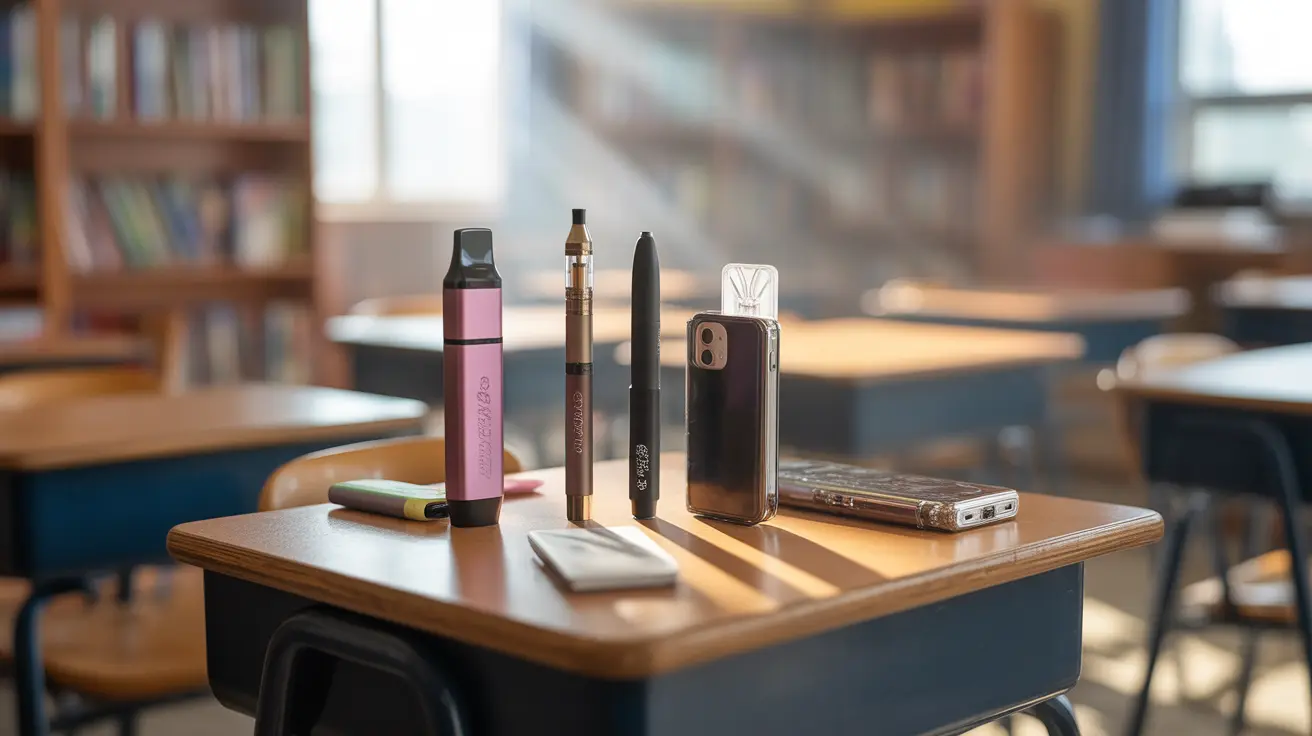The rising trend of disguised vapes represents a growing challenge for parents, educators, and health professionals working to protect teens from the dangers of nicotine addiction. These deceptively designed devices, crafted to resemble everyday items, make it increasingly difficult to identify and prevent youth vaping.
Understanding how these devices are concealed and recognizing their various forms is crucial for anyone involved in teen health and safety. This comprehensive guide will help you identify disguised vaping devices and understand the steps needed to address this concerning trend.
Common Disguises for Vaping Devices
Modern vaping devices have evolved far beyond their original designs, now appearing in various seemingly innocent forms:
- School supplies (highlighters, markers, pens)
- Smart watches and fitness trackers
- USB drives and power banks
- Clothing items (hoodie strings, backpack straps)
- Electronics accessories (phone cases, calculators)
- Beverage containers
Identifying Disguised Vaping Devices
While these devices are designed to avoid detection, there are several tell-tale signs that can help identify them:
- Unusual metal components or charging ports
- Sweet or fruity scents without an obvious source
- Multiple identical items that seem unnecessary
- Items that appear slightly larger than normal
- Unexpected battery indicators or lights
Health Risks Associated with Teen Vaping
The use of disguised vaping devices poses significant health risks to teenagers:
- Nicotine addiction and brain development interference
- Respiratory system damage
- Unknown long-term effects of chemical exposure
- Increased risk of switching to traditional tobacco products
- Potential for device malfunction and physical injury
Why Teens Choose Disguised Vapes
Understanding the appeal of disguised vaping devices can help address the root causes of teen vaping:
- Peer pressure and social acceptance
- Perceived discretion and ability to avoid detection
- Marketing strategies targeting young users
- Easy accessibility through online retailers
- The "cool factor" of tech-disguised products
Prevention and Intervention Strategies
Schools and authorities are implementing various measures to combat disguised vaping:
- Installation of vaping detection systems
- Updated school policies and increased monitoring
- Educational programs for students and parents
- Collaboration with law enforcement
- Regular locker and bathroom checks
Frequently Asked Questions
What are common everyday items that disguised vapes look like to hide from parents and teachers?
Disguised vapes commonly appear as highlighters, pens, USB drives, smart watches, hoodie drawstrings, and phone cases. These devices are specifically designed to blend in with typical student belongings, making them particularly difficult to identify.
How can parents and educators spot vaping devices that are disguised as school supplies or clothing?
Look for items that seem unusually heavy, have unexpected metal components, feature small LED lights, or require charging. Also watch for duplicate items, sweet odors, and products that appear slightly different from their authentic counterparts.
What health risks are associated with teens using disguised vaping devices?
The primary health risks include nicotine addiction, respiratory problems, potential lung damage, and developmental issues in the adolescent brain. There are also risks associated with the inhalation of artificial flavoring chemicals and the possibility of device malfunction.
Why are vaping products disguised as pens, phone cases, or hoodies so popular among teenagers?
These products are popular because they allow teens to vape discreetly without detection by authority figures. The disguised nature appeals to teens' desire for rebellion while minimizing the risk of getting caught, and the tech-savvy designs often appeal to youth culture.
What steps are being taken by authorities and schools to reduce the use of disguised vapes by teens?
Authorities and schools are implementing vaping detection systems, conducting regular inspections, updating policies, providing educational programs, and working with law enforcement to prevent the sale and distribution of these devices to minors.




